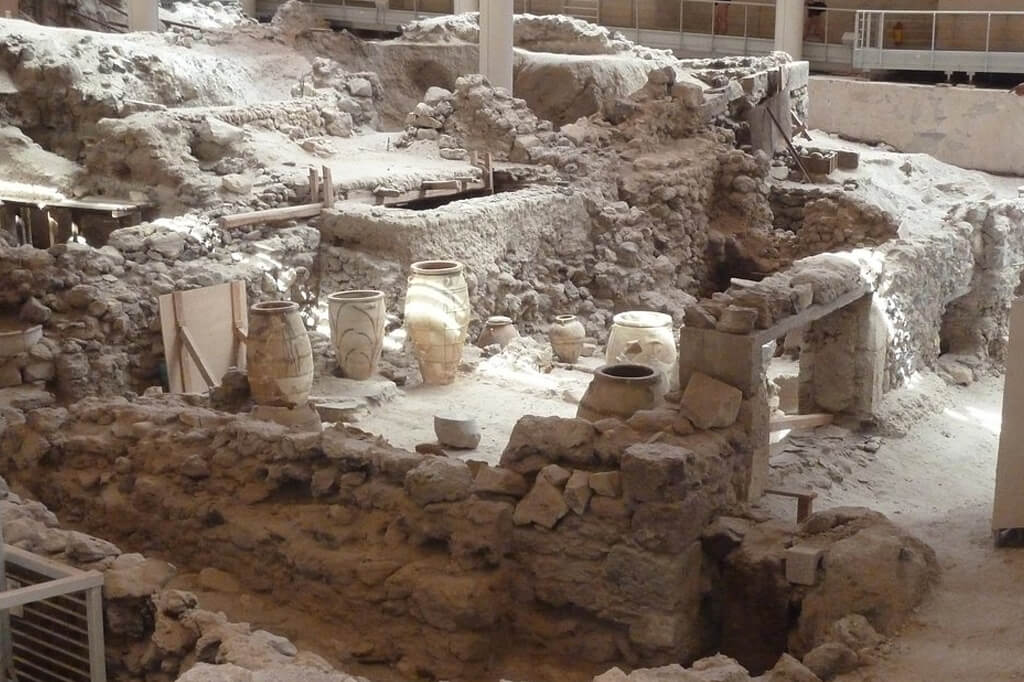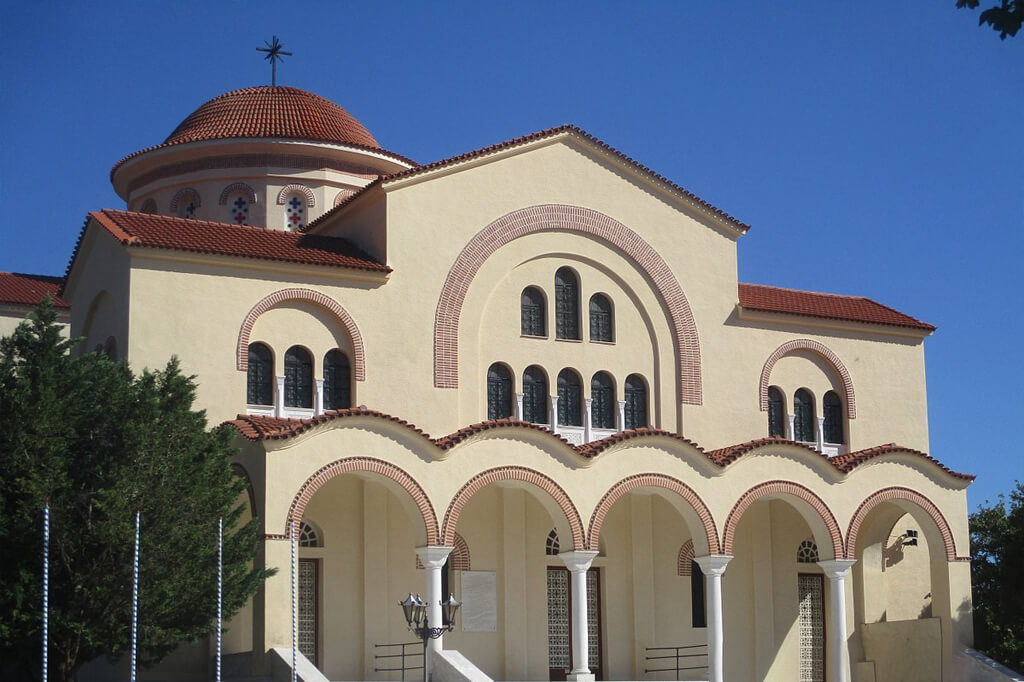Santorini, also known as Thira, is not just a picturesque island in the Aegean Sea; it’s a place steeped in history, with tales that span millennia. Its story is one of prosperity, devastation, and rebirth.
Ancient Civilizations and the Minoan Eruption
The earliest settlements on Santorini date back to the Neolithic period, around 4500 BC. By the middle of the 3rd millennium BC, the island, then possibly known as Strongylē, was a hub of the Cycladic civilization, known for its distinctive marble figurines.
However, it was during the Minoan period (circa 2000-1600 BC) that Santorini truly flourished. The island was heavily influenced by the Minoan civilization from nearby Crete. This period saw the establishment of Akrotiri, a major Bronze Age port city with multi-story buildings, advanced infrastructure, and vibrant frescoes.
But around 1600 BC, Santorini faced one of the largest volcanic eruptions in human history, known as the Minoan eruption. This cataclysmic event buried Akrotiri under layers of ash, preserving it much like Pompeii. The eruption caused a massive tsunami that affected coastal settlements in the region, including those on Crete. Some believe this event inspired the legend of Atlantis, the lost city.

Phoenicians to Romans: A Crossroads of Civilizations
After the eruption, the island remained uninhabited for a few centuries. By the 9th century BC, Phoenicians settlers arrived, followed by the Dorians in the 8th century BC. The island was renamed Thira after the Dorian leader, Theras.
In the subsequent centuries, Santorini became a crossroads for various Mediterranean civilizations. It was successively ruled by the Ptolemies of Egypt, the Seleucids of Syria, and the Romans. Under Roman rule, Santorini enjoyed a period of peace and prosperity.
Byzantine Era and Venetian Rule
With the division of the Roman Empire in 395 AD, Santorini became part of the Byzantine Empire. Christianity took root, and the island became an episcopal see. Numerous churches from this era, adorned with intricate frescoes, still stand today.
However, in the 13th century, following the Fourth Crusade and the fall of Constantinople, Santorini came under Venetian control. It was during this period that the island got its current name, a reference to Saint Irene, from the name Santa Irini. The Venetians built several fortresses, like the one in Oia, to defend against pirates.
Ottoman Era to Independence
In the 16th century, the Ottoman Empire captured Santorini. Under Ottoman rule, the island maintained a degree of autonomy, and the Christian population was allowed to practice their religion. However, the economic and cultural influence of the West continued, especially from nearby Crete and the Ionian Islands.
Santorini participated in the Greek War of Independence in the 1820s and became part of the newly established Greek state in the 1830s.
20th Century to Present
The 20th century brought challenges and transformations. In 1956, a major earthquake devastated many of the island’s villages. However, this adversity was a turning point. In the subsequent decades, Santorini emerged as a premier tourist destination. The island’s unique architecture, combined with its volcanic landscapes and archaeological sites, attracted visitors from around the world.
Today, Santorini is celebrated for its beauty, but its rich history adds depth to its appeal. From the ancient ruins of Akrotiri to the blue-domed churches of Fira and Oia, the island is a living testament to the resilience and enduring spirit of its inhabitants. Through countless challenges, from volcanic eruptions to invasions, Santorini has not only survived but thrived, becoming a beacon for travellers worldwide.

